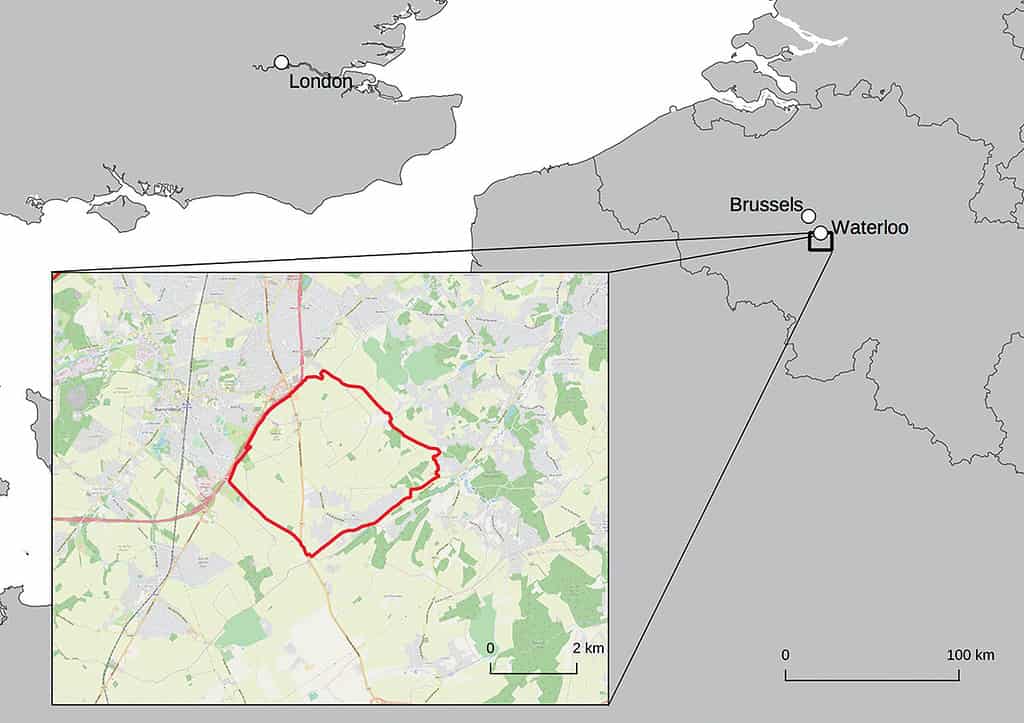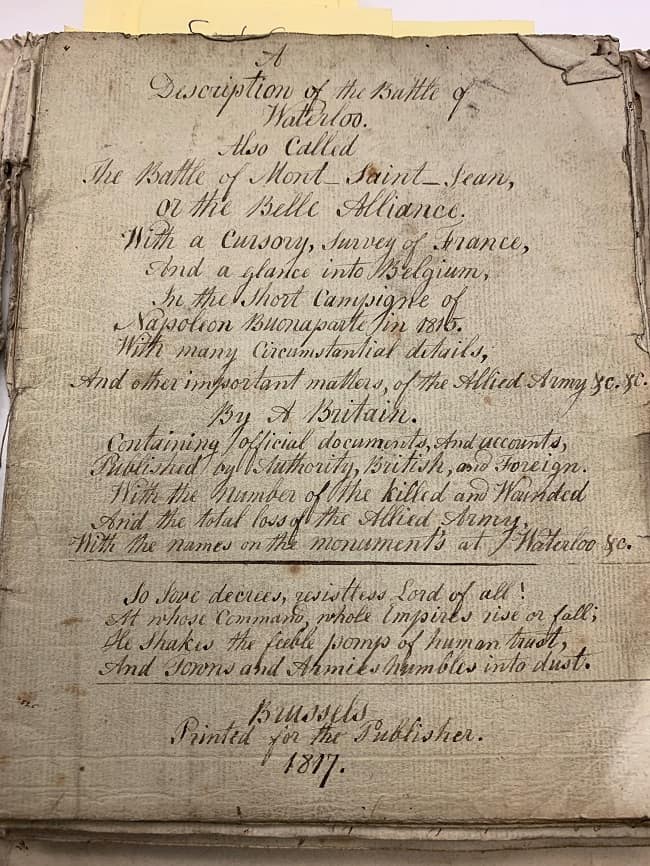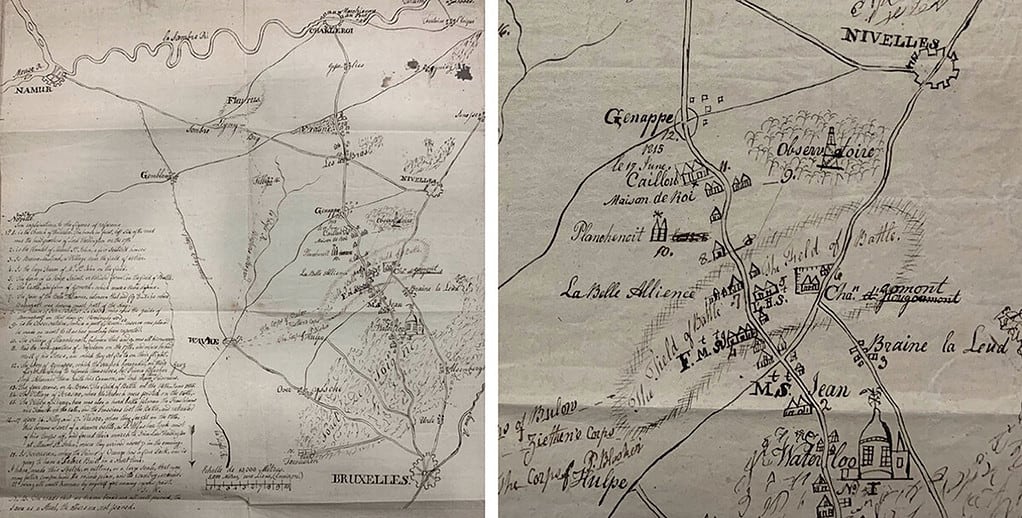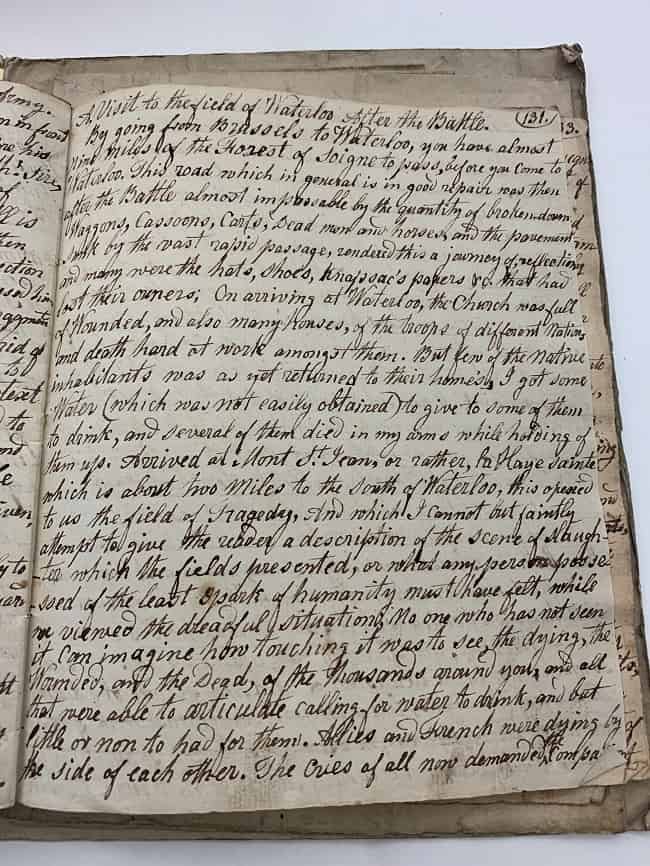
The Battle of Waterloo stands as an indomitable symbol of human resilience and sacrifice. A clash of powers that altered the very course of history. It was a battle so influential that even today, over 200 years later, we continue to unravel its secrets and learn from its profound significance.
Amidst the blood-soaked fields of that fateful day, Thomas Ker, a Scottish merchant residing in nearby Brussels, bore witness to the unimaginable.
His written account, largely kept hidden for centuries, has finally come to light, painting a haunting picture of the aftermath of the great battle and offering a unique glimpse into the heart-wrenching realities faced by those who experienced this historical turning point.
These pages, written with raw emotion and vivid detail, immortalize Ker’s experiences as one of the earliest civilian visitors to the battlefield. Moved by what he saw, Ker returned to the site of Waterloo an astounding 18 times within the span of a few years.
His collection of letters and a hand-written book, lovingly preserved by his family, was generously donated to the University of Glasgow in 2018, where it now resides in the Archives and Special Collections. Researchers have carefully analyzed these accounts, contrasting them with the writings of other contemporary visitors to the site of the great Waterloo battle, in a study that appeared in the Journal of Conflict Archaeology.
The battle that finally broke Napoleon

The Battle of Waterloo, fought on June 18, 1815, near the village of Waterloo in present-day Belgium, was a decisive conflict that marked the end of Napoleon Bonaparte’s rule as the Emperor of the French. The battle was a culmination of the Napoleonic Wars, a series of conflicts that engulfed Europe for over a decade. The opposing forces were Napoleon’s French army and an allied coalition led by the Duke of Wellington, representing Britain, the Netherlands, and Prussia.
Napoleon had returned from exile in 1815 and sought to regain power in France. He rapidly built a formidable army and hoped to defeat the allied forces before they could unite against him. The Battle of Waterloo was the final clash between these two forces. Despite Napoleon’s tactical brilliance, the allied armies managed to withstand his attacks and ultimately emerged victorious.
The significance of the Battle of Waterloo cannot be overstated. It marked the end of Napoleon’s ambitious and expansionist era, ensuring a period of peace and stability in Europe for several decades. The battle also brought about a major shift in the balance of power on the continent. The defeat of Napoleon solidified Britain Empire’s position as the dominant global power.
But despite the legendary status of this event in history, Waterloo is often discussed by detached scholars and observers who often lose track of the human element, even when reflecting on the human cost of war. Ker’s accounts, as you shall see, sit in stark contrast.
A fresh first-hand perspective into the horrors of Waterloo

In his poignant writings, the Scotsman transports us to the fields of Mont St John, just south of the village of Waterloo shortly after the dust of battle had settled. There, amidst the chaos and carnage, Ker describes a scene of unimaginable horror—a tapestry of the dying, the wounded, and the dead.
In this bleak tableau, cries for water mingle with agonized pleas for relief, forming a chorus of suffering that pierces the soul. Both allies and Frenchmen lie side by side, united in their shared destiny of tragic demise by death through violence. Ker’s words are truly haunting at times, reflecting his tormented inner emotional state.
VISIT TO THE BATTLEFIELD OF WATERLOO AFTER THE BATTLE
Thomas Ker
“By going from Brussels to Waterloo, you have almost nine miles of Forest of Soigne to pass, before you come to Waterloo. This road which in general is in good repair was there after the battle almost impassible by the quantity of broken down wagons, cassoons, carts, dead men and horses, and the pavement sunk by the vast rapid passage, rendered this a journey of reflection, and many were the hats, shoes knapsacs, papers etc. that had lost their owners.”
“On arriving at Waterloo, the Church was full of wounded, and also many houses, of the troops of different nations, and death hard at work amongst them. But few of the native inhabitants was as yet returned to their homes.”
“I got some water (which was not easily obtained) to give to some of them to drink, and several of them died in my arms while holding of them up. Arrived at Mont St John, or rather La Haye Sainte which is about two miles to the south of Waterloo, this opened towards the field of tragedy, and which I cannot but faintly attempt to give reader a description of the scene of slaughter which the fields presented, or what any person possessed of the least spark of humanity must have felt, while he viewed the dreadful situation.”
“No one who has not seen it can imagine how touching it was to see the dying, the wounded, and the dead, of the thousands around you, and all that were able to articulate calling for water to drink, and but little or none to be had for them. Allies and French were dying by the side of each other. The cries of all now demanded the compassion of the bystander without exception.” (Ker, 1817)
Excerpt from Thomas Ker’s accounts of Waterloo.
Ker also produced a map of the battlefield and wider area of the military campaign around Waterloo.

Ker would visit Waterloo many, many times, something that perhaps reveals the depth of his trauma. Ker’s repeated exposure to the scenes of devastation became a personal pilgrimage. This repeated confrontation with his trauma mirrored what modern psychologists term “exposure therapy.” Perhaps Ker’s unwavering determination to confront the horrors he had witnessed became a source of healing.
Of course, Ker wasn’t the only civilian to visit Waterloo. Leading artists and writers of the time visited the site of the great battle, including Sir Walter Scott and Lord Byron, who later dedicated poems and other works of art to the historical event.

But most of these people would arrive at Waterloo many weeks after the fighting had ended when the fields were cleared of the dead. In contrast, Ker arrived at Waterloo while the wounded were still dying on the smoky battlefield. In doing so, he exposed himself to unspeakable carnage but also lived to tell the tale in what’s perhaps the most reliable first-hand account from Waterloo that we have from a civilian.
It’s not clear why Ker never had his work published, though he certainly intended to do so judging from the contents of the first pages of his hand-written book. Fortunately, his work survived two centuries and has now come to light.
Battlefield souvenirs and dark tourism
In the wake of Waterloo, the battlefield became more than a mere site of historical significance—it transformed into a thriving hub of dark tourism. British visitors flocked to the fields, eager to secure relics and mementos of this momentous battle. Soldier’s caps, shoes, gloves, and belts, alongside sentimental love letters and books, adorned the landscape. Locals capitalized on this newfound market, collecting and selling these remnants of war.
The demand for souvenirs from Waterloo created a thriving industry. Yet, as genuine artifacts became scarce, whispers of counterfeit relics began to circulate. Legends emerged of a factory in Liege producing counterfeit buttons by the thousands. Regardless of the authenticity of these rumors, the allure of Waterloo souvenirs remained strong. Waterloo continued to attract visitors, with as many as 4,000 to 5,000 British tourists making the pilgrimage each year by 1839.
Locals played a pivotal role in the burgeoning tourism industry, serving as guides and facilitating the exploration of the battlefield. Their efforts provided a vital source of income, solidifying battlefield tourism as an integral part of the local economy throughout the nineteenth century and beyond.
Travel accounts and guidebooks sprouted, offering invaluable advice on how to navigate the journey to Waterloo and providing insight into accommodations and dining options. As British tourists began to venture to the continent in greater numbers, Belgium, still part of the Netherlands at the time, became a cherished destination for these intrepid travelers. Waterloo, forever woven into the fabric of history, found its place in the volumes of guidebooks, inviting a new generation to step foot on its storied grounds.
With the publication of Thomas Ker’s long-hidden account, we are granted a fresh perspective on the Battle of Waterloo. His words, infused with the weight of tragedy and resilience, allow us to stand beside him on those blood-soaked fields. As we reflect on the sacrifices made and the lives forever changed, we honor the memory of those who faced the horrors of war. For over two centuries, Waterloo has captivated the hearts and minds of the world, serving as a timeless reminder of the fragility and strength inherent in the human spirit.
This article originally appeared in June, 2023 and was updated with new information.






